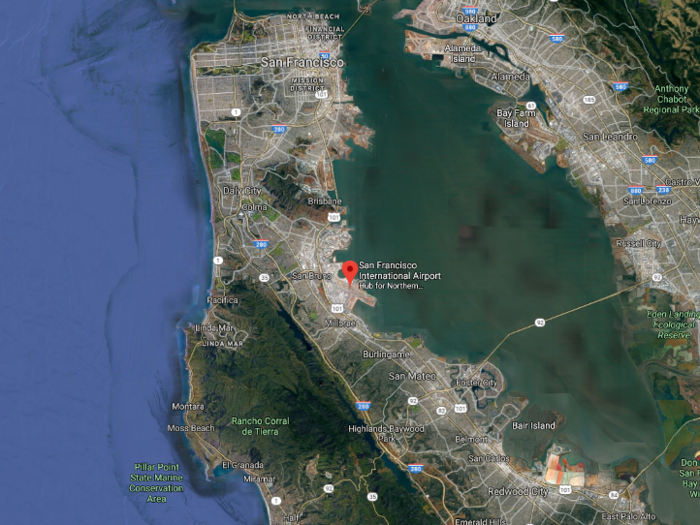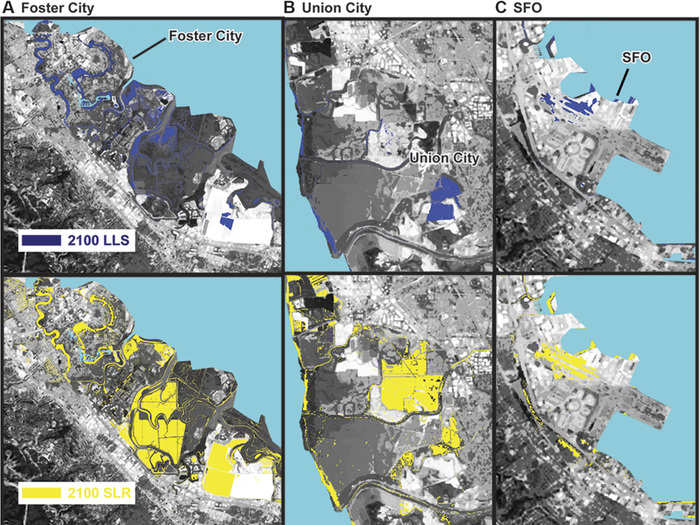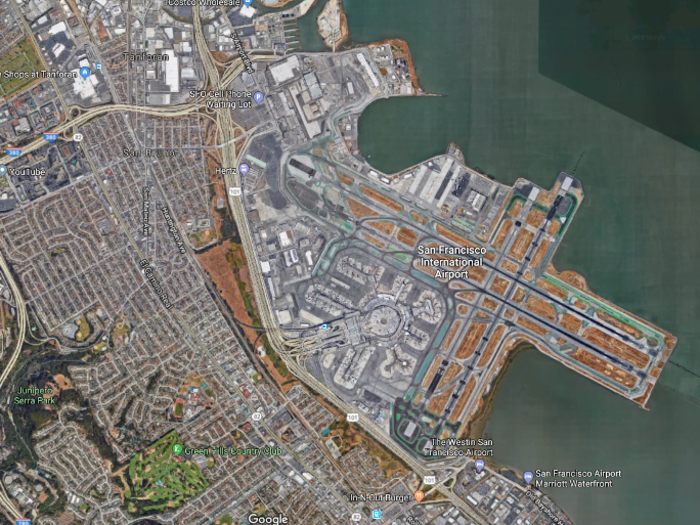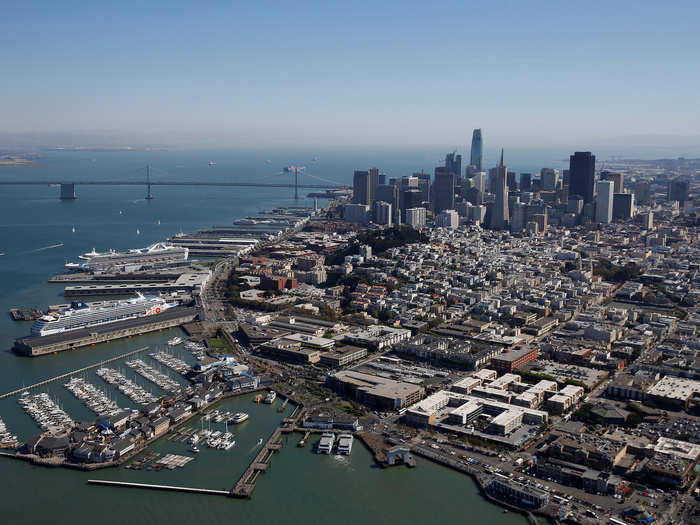To put that into perspective, the researchers generated maps — based on different emissions-reduction scenarios —combining elevation data with predicted sea level rise and subsidence rates.
They found that current flooding projections underestimate how much of the area will actually be underwater by 2100 — by 3.7% at the low end and up to a whopping 90.9% at the high end. The researchers predict that up to 165 square miles of the Bay Area will be vulnerable to flooding in the future.
These maps show areas of the city — with the airport at the center — susceptible to flooding under three different scenarios.
The top map shows how much land will be underwater when only accounting for land subsidence (LLS). The yellow map in the middle depicts sea level rise (SLR).
The third scenario, in red on the bottom, shows the combination of sea level rise with the highest predicted rate of subsidence rate — leaving much of San Francisco International Airport, Foster City, and Union City underwater.
These new maps have powerful ramifications for insurance companies and the highly-valued properties on the Bay Area's coastline.
According to the researchers, there's not much we can do to stop the area from being flooded other than attacking the root causes of sea level rise by cutting emissions.
"There is no permanent solution to this problem," Shirzaei, one of the paper's authors told Wired. "The forces are immense, it's a very powerful process, the cost of really dealing with it is huge, and it requires long-term planning. I'm not so sure there's a good way to avoid it."




